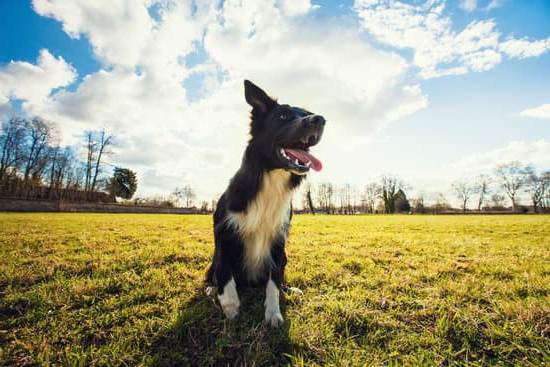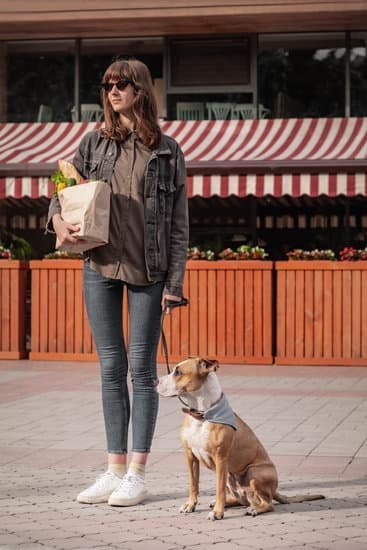Are smaller dogs easier to house train? This is a question that many new dog owners may have as they embark on the journey of training their furry companions. In this article, we will explore the common misconception that smaller dogs are easier to house train and delve into the factors that can impact a dog’s ability to be house trained, regardless of size.
House training a dog requires understanding the basics of consistency, routine, and positive reinforcement. It is not simply a matter of size, but rather a combination of various factors that contribute to successful training. Factors such as breed, temperament, age, and previous living conditions play crucial roles in the house training process. We will discuss how these elements come into play when it comes to effectively house training any dog.
While there may be some advantages to house training smaller dogs due to their smaller bladder size and potential for more frequent bathroom breaks, there are also common challenges that come with it. Smaller attention spans and stubbornness can present obstacles in the training process. Our goal is to provide practical tips and strategies for effectively house training smaller dogs while emphasizing the importance of owner responsibility throughout the process.
Understanding the Basics of House Training
House training a dog is an essential part of pet ownership, and it requires patience, consistency, and positive reinforcement. Whether you have a small dog or a large dog, the fundamentals of house training remain the same.
It’s important to establish a routine and stick to it, as well as provide your pet with plenty of opportunities to go outside for bathroom breaks. Here are some key principles to keep in mind when house training your furry friend:
- Consistency is key: Establish a consistent schedule for feeding, potty breaks, and playtime.
- Routine: Take your dog outside first thing in the morning, after meals, before bedtime, and at regular intervals throughout the day.
- Positive reinforcement: Praise and reward your dog when they successfully go potty outside.
By understanding these basic principles and incorporating them into your house training routine, you can set your dog up for success regardless of their size.
In addition to the basic principles of house training, there are several factors that can impact a dog’s ability to be effectively house trained. These factors include the breed of the dog, their temperament, age, and previous living conditions. For example:
- Breed: Some breeds may be more difficult to house train than others due to their independent nature or high energy levels.
- Temperament: Dogs with a stubborn or strong-willed temperament may require more patience and consistent training.
- Age: Puppies may require more frequent bathroom breaks compared to adult dogs due to their smaller bladder size.
It’s important for pet owners to consider these factors when embarking on the house training journey with their four-legged companions. Regardless of size, understanding these variables can help tailor your approach to best suit your dog’s individual needs.
Factors Affecting House Training
House training a dog can be affected by several factors, regardless of the dog’s size. One important consideration is the breed of the dog. Some breeds are known to be easier to house train than others. Additionally, a dog’s temperament and age can also impact their ability to be house trained. For example, older dogs may have already developed habits that are difficult to break, while younger puppies may still be learning bladder control.
Another factor to consider is the dog’s previous living conditions. Dogs that were previously kept in a shelter or puppy mill environment may not have been properly house trained, making it more challenging for them to adapt to a home environment. Additionally, any traumatic experiences in the past may affect a dog’s behavior and ability to learn new habits.
It’s important for pet owners to understand that there is no one-size-fits-all approach to house training dogs. Each dog is unique and may require different methods and strategies to effectively learn appropriate bathroom behaviors. By considering these various factors, pet owners can better understand their dog’s individual needs and work towards successful house training.
| Factors | Impact on House Training |
|---|---|
| Breed | Some breeds are easier to house train than others. |
| Temperament and Age | Different temperaments and ages can affect a dog’s ability to learn bladder control. |
| Previous Living Conditions | Dogs with traumatic experiences or from shelters/puppy mills may find it more challenging to adapt. |
Size as a Factor in House Training
When it comes to house training, one common belief is that smaller dogs are easier to train than larger ones. While there may be some advantages to house training a small dog, size alone does not guarantee an easier process. However, it is important to consider the potential impact of size when it comes to house training a dog.
One factor to consider is the size of a dog’s bladder. Smaller dogs have smaller bladders, which means they may need more frequent bathroom breaks compared to larger breeds. This can be both an advantage and a challenge when it comes to house training.
On one hand, smaller dogs may need more opportunities to relieve themselves, which can lead to quicker progress in establishing a routine for bathroom breaks. On the other hand, it also means that owners may need to be more diligent in providing those opportunities throughout the day.
Another consideration is the overall energy level and activity needs of smaller dogs. Some small breeds have higher energy levels and may require more mental stimulation and physical exercise, which can impact their ability to focus on house training. Additionally, smaller dogs can sometimes be perceived as being “difficult” or “stubborn,” which can affect their willingness to cooperate during the house training process.
In summary, while size is indeed a factor in house training, it is just one of many factors that must be considered when working with any dog. It’s important for owners to approach house training with patience, consistency, and understanding regardless of the size of their canine companion. By being aware of the specific challenges and advantages associated with smaller dogs, owners can tailor their approach to best meet the needs of their furry friend.
| Factor | Impact |
|---|---|
| Bladder Size | Potential for more frequent bathroom breaks |
| Energy Level | Higher energy levels may impact focus on training |
| Perceived Stubbornness | Might impact willingness to cooperate during training |
Challenges in House Training Smaller Dogs
When it comes to house training smaller dogs, there are some unique challenges that owners may face. While smaller dogs may have certain advantages due to their size, they also present specific obstacles that can make the house training process more difficult. It’s important for dog owners to be aware of these challenges so they can effectively address them and successfully train their small canine companions.
One common challenge when house training smaller dogs is their shorter attention spans compared to larger breeds. Smaller dogs may get easily distracted or lose interest in the training process, making it harder for them to understand and follow the rules of house training. This means that owners need to be patient and persistent in their efforts and find ways to keep their small dogs engaged during training sessions.
Another challenge with smaller dogs is their tendency towards stubborn behavior. Some small breeds can be quite headstrong and resistant to following commands, which can impede the house training process. Owners need to use positive reinforcement techniques and consistent training methods to overcome this stubbornness and encourage good potty habits in their smaller dogs.
High Frequency of Bathroom Breaks
Due to their smaller bladder size, smaller dogs often need more frequent bathroom breaks compared to larger breeds. This means that owners may need to take their small dogs outside for potty breaks multiple times throughout the day, especially during the initial stages of house training. This can be a challenge for people with busy schedules or those who live in apartments without easy outdoor access.
Overall, while there are certainly challenges involved in house training smaller dogs, it’s important for owners to approach the process with patience, consistency, and understanding. By addressing the specific obstacles that come with small breeds, dog owners can successfully navigate the house training journey with their beloved furry companions.
Tips for House Training Smaller Dogs
Establish a Consistent Routine
House training smaller dogs, or any dog for that matter, requires a consistent routine. This means taking your dog outside at the same times every day, such as first thing in the morning, after meals, and before bedtime. By establishing a predictable schedule, you are helping your dog understand when it’s time to go potty and creating good habits.
Use Positive Reinforcement
When house training a smaller dog, it’s important to use positive reinforcement to encourage good behavior. This can include verbal praise, treats, or favorite toys. Whenever your dog successfully goes potty outside, make sure to reward them immediately with positive reinforcement. This will help them associate going outside with positive experiences and increase the likelihood of them repeating this behavior in the future.
Monitor Their Behavior Closely
Keep a close eye on your smaller dog’s behavior when they are indoors. Look for signs that they need to go potty such as sniffing the ground, circling an area, or whining.
By being attentive to these cues, you can quickly take them outside before accidents happen indoors. It’s also important to be patient and understanding during the house training process as accidents are likely to occur while your smaller dog is learning the ropes of their new routine.
The Role of Owner Responsibility
Smaller dogs are often thought to be easier to house train due to their size, but the truth is that successful house training depends largely on the owner’s responsibility and commitment. House training a dog, regardless of its size, requires patience, consistency, and understanding. This section will emphasize the importance of owner responsibility in successfully house training any dog.
To effectively house train a smaller dog, owners must be dedicated to providing a consistent routine. This includes taking the dog out for bathroom breaks at regular intervals throughout the day and closely monitoring their behavior for signals that they need to go outside. Consistency in routine helps the smaller dog understand where and when they are expected to relieve themselves.
Furthermore, positive reinforcement plays a crucial role in house training smaller dogs. Owners must consistently praise and reward their smaller dogs for exhibiting good behavior and going to the designated potty area. This can include giving treats or verbal praise as soon as the dog finishes its business outside. By doing so, the smaller dog will learn that going outside results in positive outcomes, thereby reinforcing desired behaviors.
In addition to consistency and positive reinforcement, it’s important for owners to approach house training with patience and understanding. Smaller dogs may have more frequent bathroom breaks due to their smaller bladder size; therefore, accidents inside the house may occur despite best efforts.
It’s crucial for owners not to get frustrated and instead maintain a calm demeanor when accidents happen, continuing with the established routine while keeping an eye on signs that indicate a need for outside time. With responsible ownership and dedication to these principles, successful house training of smaller dogs is very achievable.
Conclusion
In conclusion, the size of a dog does play a role in house training, but it is not the only factor to consider. While smaller dogs may have advantages such as smaller bladder size and more frequent bathroom breaks, they also come with their own set of challenges such as shorter attention spans and stubbornness.
It is important for dog owners to understand that successful house training relies on consistency, routine, and positive reinforcement, regardless of the size of the dog.
Ultimately, whether you have a large or small breed, house training requires commitment and patience from the owner. It is essential to create a consistent routine, use positive reinforcement, and be understanding of your dog’s needs. Additionally, taking into consideration the individual factors such as breed, age, and temperament can also impact the success of house training.
As responsible pet owners, it is our duty to ensure that our dogs are properly trained and cared for. By understanding the basics of house training and being aware of the unique challenges that come with smaller dogs, we can create a positive environment that promotes successful house training for all dogs. Remember to share your experiences and tips with others who may be navigating the same journey of house training smaller dogs.
Frequently Asked Questions
Are Smaller Dogs Harder to Potty Train?
Smaller dogs can be more challenging to potty train because they have smaller bladders and may need to go outside more frequently. Additionally, some small dogs are known to be more stubborn or independent, making them less motivated to follow a potty training routine.
What Small Dog Is the Easiest to House Train?
The easiest small dog breed to house train can vary depending on the individual dog’s personality and temperament. However, some small breeds that are often regarded as easier to house train include Shih Tzus, Poodles, and Maltese. These breeds are known for being intelligent and eager to please, which can aid in the house training process.
How Long Does It Take to Housebreak a Small Dog?
The time it takes to housebreak a small dog can vary widely depending on the dog’s age, previous training, and individual temperament. Generally, with consistent positive reinforcement training methods, a small dog can be fully housebroken within 4-6 months.
However, some dogs may learn more quickly while others may take longer to grasp the concept of potty training. Consistency and patience are key when housebreaking a small dog.

Welcome to the blog! I am a professional dog trainer and have been working with dogs for many years. In this blog, I will be discussing various topics related to dog training, including tips, tricks, and advice. I hope you find this information helpful and informative. Thanks for reading!





